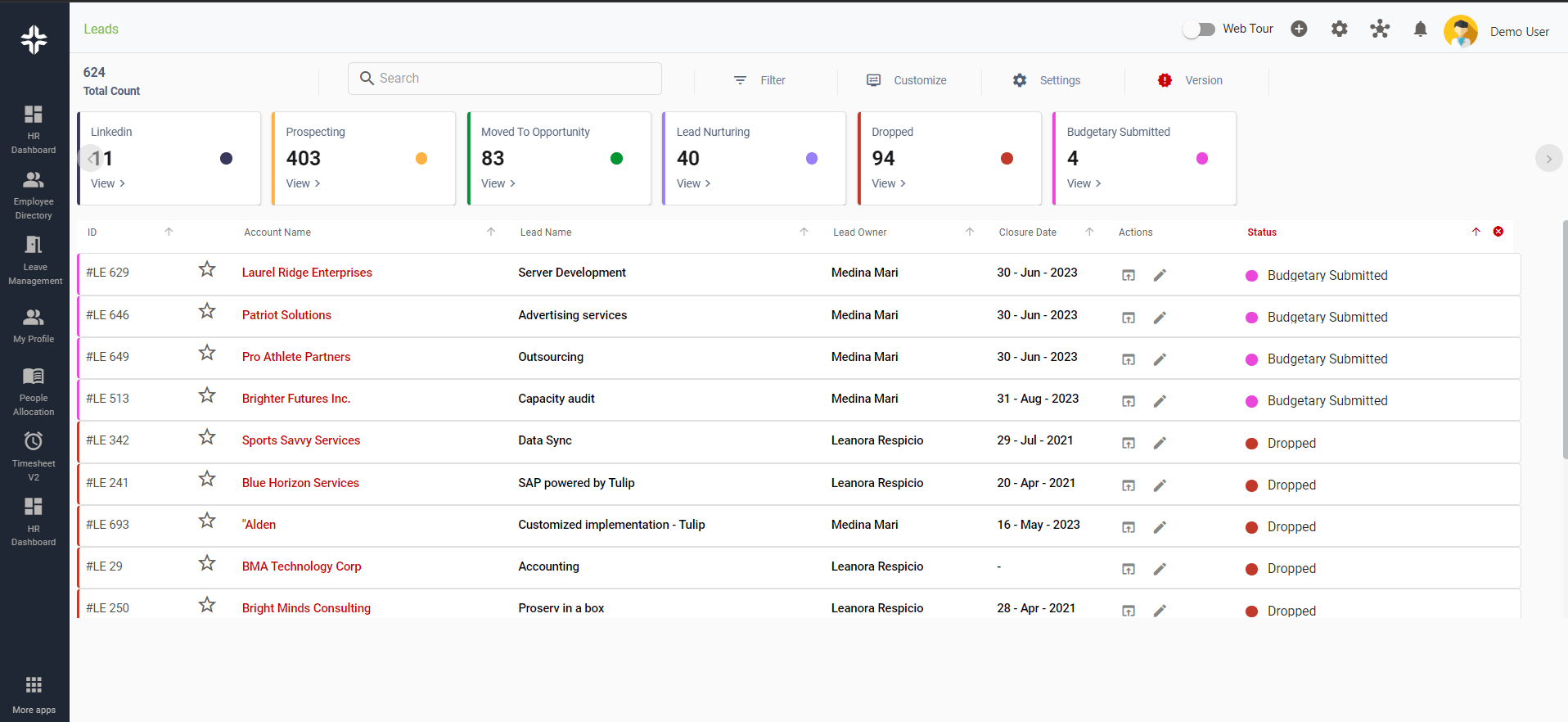Home » PSApedia
Lead-to-Opportunity Conversion Rate
Analyze Lead-to-Opportunity Conversion Rate for Smarter Business Growth.

What is Lead-to-Opportunity Conversion Rate?
The Lead-to-Opportunity Conversion Rate is a crucial metric in sales and marketing that measures the percentage of leads (potential customers) that become opportunities (qualified leads that are more likely to make a purchase).
In the context of Professional Service Automation (PSA), it helps businesses understand the efficiency of their sales processes and the effectiveness of their marketing strategies.
Importance of Lead-to-Opportunity Conversion Rate
In the competitive world of professional services, understanding and optimizing your conversion rate is paramount. Here’s why:
1. Efficiency Measurement: It provides insights into how well your sales and marketing teams are working together.
2. Resource Allocation: By understanding which leads are more likely to convert, businesses can allocate resources more effectively, ensuring that high-potential leads are prioritized.
3. Strategic Planning: It aids in refining marketing strategies, ensuring that efforts are directed towards the most promising leads.

Why Lead-to-Opportunity Conversion Rate is so important?
Calculating the Lead-to-Opportunity Conversion Rate
Lead-to-Opportunity Conversion Rate = (Number of Opportunities / Number of Leads) × 100
Example:
Let’s say a company using deal management software generated 1000 leads in a month. Out of these, 150 leads were identified as opportunities.
Conversion Rate=(150/1000)×100=15%
This means the company has a 15% lead-to-opportunity conversion rate.
Lead-to-Opportunity Conversion Rate vs Other Metrics
Understanding the nuances between these metrics ensures that businesses can measure and optimize their sales processes accurately. While the conversion rate is vital, it’s essential to differentiate it from other related metrics:
1. Lead-to-Customer Conversion Rate: This measures the percentage of leads that directly result in sales. It’s a broader metric than the lead-to-opportunity rate.
2. Click-through Rate (CTR): Often used in digital marketing, CTR calculates the percentage of people who click on an ad or link out of the total who see it.
3. Opportunity-to-Customer Conversion Rate: This narrows down the focus from opportunities to actual sales.
| Metric | Definition | Significance |
|---|---|---|
| Lead-to-Opportunity Conversion Rate | The percentage of leads that become qualified opportunities. Indicates the effectiveness of lead nurturing and qualification. | High |
| Opportunity Win Rate | The percentage of opportunities that turn into closed deals. Reflects the sales team’s ability to close deals successfully. | High |
| Average Deal Size | The average monetary value of closed deals. Affects revenue and profitability; larger deals can be more profitable. | High |
| Sales Cycle Length | The average time it takes to close an opportunity. Impacts resource allocation and revenue forecasting. | High |
Utilizing the Lead-to-Opportunity Conversion Rate in Business
The Lead-to-Opportunity Conversion Rate is not just a number; it’s a tool. Here’s how businesses use it:
1. Sales Training: If the conversion rate is lower than industry standards, it might indicate that the sales team needs further training or resources.
2. Marketing Strategy Refinement: A low conversion rate could also mean that marketing strategies are not attracting the right kind of leads. Tools like proposal builder can help in refining these strategies.
3. Budgeting: By understanding which strategies yield the highest conversion rates, businesses can allocate their budgets more effectively.
4. Forecasting: A consistent conversion rate allows businesses to predict future sales and revenue more accurately.
Ready to Optimize Your Lead-to-Opportunity Conversion Rate?
KEBS, a leading Professional Service Automation (PSA) software, offers tools that can significantly enhance the lead-to-opportunity conversion rate. With KEBS sales pipeline tool, businesses can track leads more efficiently, ensuring that no potential opportunities are missed.
KEBS offers robust analytics tools that provide insights into lead behavior, helping businesses understand and target their audience better. With features like KEBS project management software, teams can collaborate more efficiently, ensuring that leads are handled promptly and effectively.
In the world of PSA, where competition is fierce, and client expectations are high, optimizing the Lead-to-Opportunity Conversion Rate is not just beneficial; it’s essential. And with tools like KEBS, businesses are better equipped than ever to do just that.

KEBS Leads Management
Ready to optimize your conversion rate? Dive deeper into KEBS features or contact us for a personalized demo.



